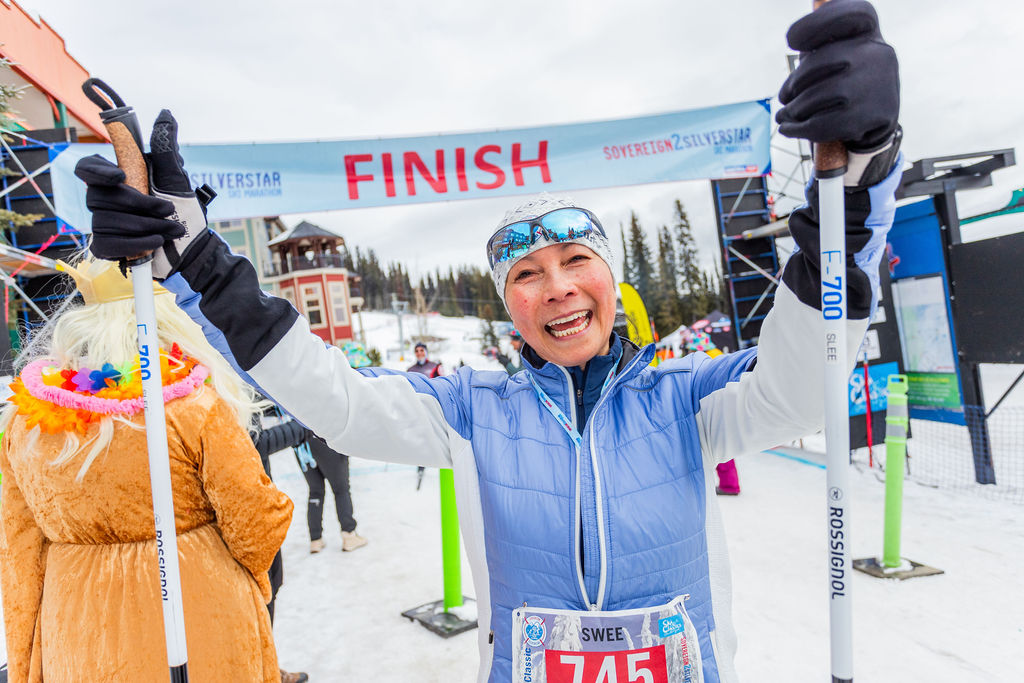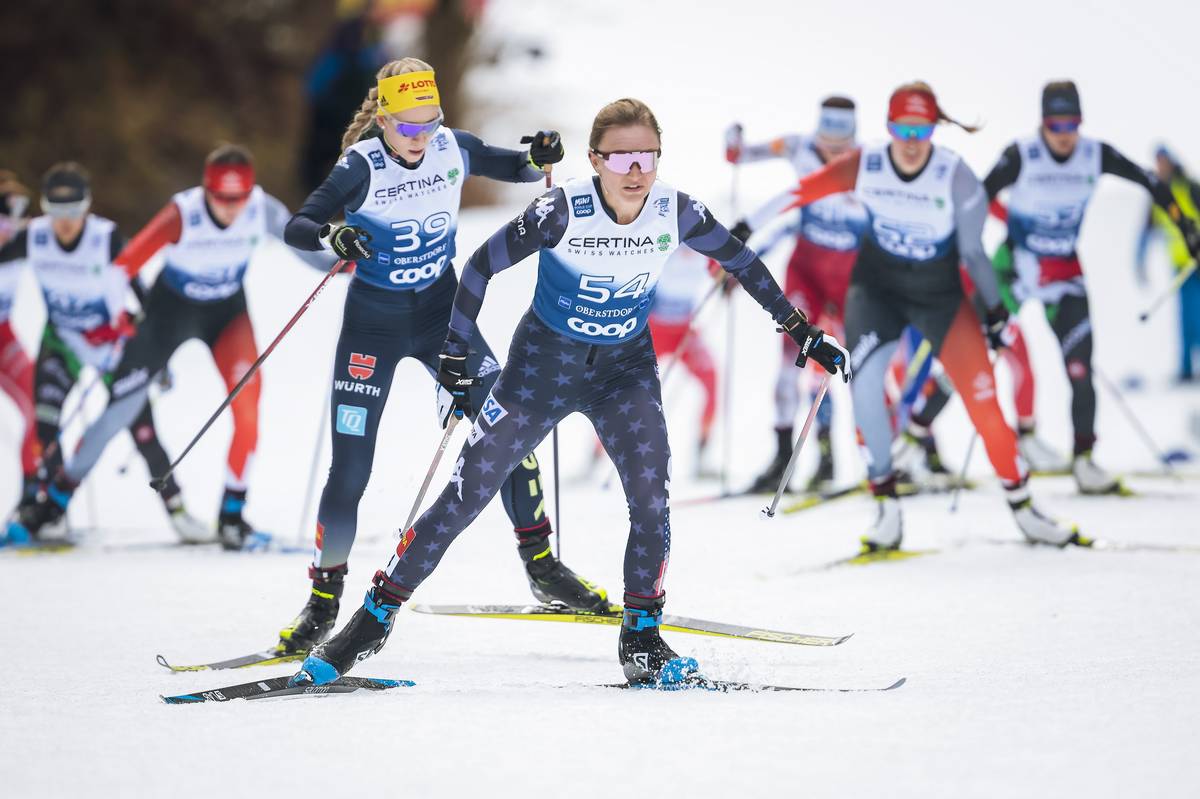
For U.S. ski fans, this year’s World Junior and U-23 Championships, which begin Wednesday in Estonia, have the potential to be pretty sweet.
On paper, the American squad is as good as any from the last five years, and deeper, too. No fewer than five of its athletes will go on to compete at the World Ski Championships in Oslo later this winter.
With Estonia experiencing one of its best winters in years, and two Olympic medalists among the competitors, there’s no doubt that the next week will see some thrilling racing.
But unless you were a geography major, you’re probably still stuck on that first sentence—where the heck is Estonia?
How do you get there? And why did someone decide that it was the best place to host these races? Below, we offer a quick primer on everything you need to know.
The Basics
Estonia is one of the three Baltic countries, along with Lithuania and Latvia. On a map, it’s the one directly underneath Finland, and left of Russia.
While the country has spent a good chunk of its history under Russian control, its inhabitants identify more closely with the Finns, who live just 50 miles away, across the Gulf of Finland. Among other things, Estonians share an affinity for saunas, as well as aspects of their language (mainly, double vowels and impenetrability), with their neighbors to the north.
After a training camp last week in Finland, all 22 members of the American squad took a sketchy-looking ferry to Tallinn, Estonia’s capital city, on the country’s northern coast. From there, they drove three hours to get to the southeastern town of Otepaa, where the competitions are being held.
Otepaa also hosted last weekend’s World Cup competitions, and the venue is a full-on ski mecca. It’s the home base for Estonia’s national team, whose athletes enjoy a status rivaled only that of Scandinavian and Russian skiers. After last weekend’s World Cup races, they got front-page photos and double-page spreads in Postimees, the national newspaper, and many can be seen

driving through town in vehicles provided by their sponsors.
The Tehvandi ski stadium could suffice for a minor-league baseball team, and the venue also features an immaculate press center. And, of course, the trails are wide, well-groomed, and challenging.
The Competitions
For the last few years, the International Ski Federation has been tinkering with the schedule for U-23’s and World Juniors, even if the event composition—a sprint, short distance races (15/10 k for U-23’s, 10/5 k for juniors), a pursuit, and a junior relay—has remained largely stable.
This season’s schedule includes five consecutive days of competitions, alternating between juniors and U-23 athletes, before concluding on the sixth day with two different events: the junior relays and the U-23 pursuits.
That last one should be taxing for waxers, who will have to prep as many as 24 pairs of skis: four pairs for each relay team, and classic and skate skis for up to four starters in the pursuit.
If the service staffs have their work cut out for them, at least they’re blessed with spacious, well-ventilated wax cabins, and conditions that are forecasted to be straightforward—cool, with fresh snow, for the next few days.
The American wax staff is led by U.S. Ski Team serviceman Randy Gibbs, and also includes University of Vermont Assistant

Coach Andrew Johnson; an Estonian, Oleg Ragila; and Casey Fagerquist, who heads up the indefatigable service staff for Alaska Pacific University’s club program.
All told, according to Fagerquist, the Americans brought between 300 and 350 pairs of skis to Europe, which are transported inside a massive rented cargo van. Testing all of those boards is a big project, since the service team isn’t familiar with each athlete’s quiver—to facilitate the process, team staff had skiers fill out forms with a brief biography of each pair.
Who’s Here?
With one day to go before Wednesday’s competitions—the 10/5k for juniors—the stadium was teeming with athletes, coaches, and waxers from 37 nations. (That figure also includes countries competing in analogous events for nordic combined and ski jumping.)
All the traditional powerhouse nations are here, although Norway’s squad for U-23’s is not as competitive as in prior years—instead, many of its best young athletes elected to race at the country’s national championships this week, in hopes of securing start spots at senior World Championships.
Two Olympic silver medalists are the headliners. Tim Tscharnke’s brilliant final leg in the team sprint in Vancouver helped secure the Germans their hardware, while a few days earlier. Alexander Panzhinskiy, a Russian, narrowly missed out on gold when his teammate Nikita Kriukov outlunged him in the finals of the individual sprint. Plenty of other athletes with Olympic World Cup experience will take to the trails in Otepaa; check FasterSkier soon for a guide to the skiers to watch.

The Americans are led by those five World Championship team members: Ida Sargent, Noah Hoffman, Tad Elliott, Jessie Diggins, and Sadie Bjornsen. The last three are newly-minted national champions, as well.
Making predictions for the events in Estonia is tough, since fields change every year, and minimal opportunities exist for head-to-head comparisons. But there are a few benchmarks. As far as U-23’s go, both Hoffman and Sargent have raced on the World Cup this season, and their best days, just shy of the top 30, should leave them in contention for top-10 results here.
Earlier this month, Sargent was struggling to race to her potential while still recovering from injuries she sustained in a car accident in December, but in e-mail to FasterSkier on Tuesday, she said she’d experienced a “huge improvement” since then.
Elliott and Bjornsen have both proven themselves to be at a similar level domestically, and while neither has popped a big international result, both know their way around Europe. Bjornsen is on her sixth World Junior/U-23’s trip, while Elliott travels frequently as a professional mountain biker. Top 10’s should be within reach for both—especially for Elliott, since both distance races include skating, his stronger technique.
“I’m pumped on the 15 k skate,” he said on Tuesday. “A lot of big hills out there—a lot of powerful V2.”
As far as juniors, Diggins has chops in both distance and sprint, and after her stellar results in the fall and at U.S. Nationals—which included a win in the skate sprint, and a fourth in the 10 k classic—a top five doesn’t seem out of the question. Skyler Davis and Erik Bjornsen both had great finishes in the classic sprint at U.S. Nationals, as well, while Scott Patterson was on fire at the SuperTour in Lake Placid.

Could the American squad produce a medal? It’s tough to say. But team leader Matt Whitcomb has been on the last several U-23 and World Junior trips, and he didn’t rule it out.
“We have some guns on this team, absolutely,” he said. “It in no way means that we’ll get those medals, but…you can look at our list and say ‘wow—each of these groups has at least one skier that could be well inside the top 10, and several more, in some cases.”
The U.S. team will be very competitive, but they’re not the only ones from North America with a shot at the podium. Canadian star Alex Harvey will fly in to contest a single race in Otepaa, the 30 k pursuit on January 31st, where he’ll be the favorite to win. And coming off a strong fall of international racing, including a 17th place in a World Cup sprint in Switzerland, Len Valjas has his sights set on the U-23 classic sprint final, according to Godfrey Bilodeau, one of the Canadian coaches. It’s the only event Valjas will race here, and he’ll have plenty of motivation after finishing 31st, just .02 seconds out of the heats, in last weekend’s World Cup here.
As for juniors, Heidi Widmer and Patrick Stewart-Jones should be competitive in the sprint, Bilodeau said, while Andy Shields could crack the top 15 in the distance races.
Nathaniel Herz
Nat Herz is an Alaska-based journalist who moonlights for FasterSkier as an occasional reporter and podcast host. He was FasterSkier's full-time reporter in 2010 and 2011.



